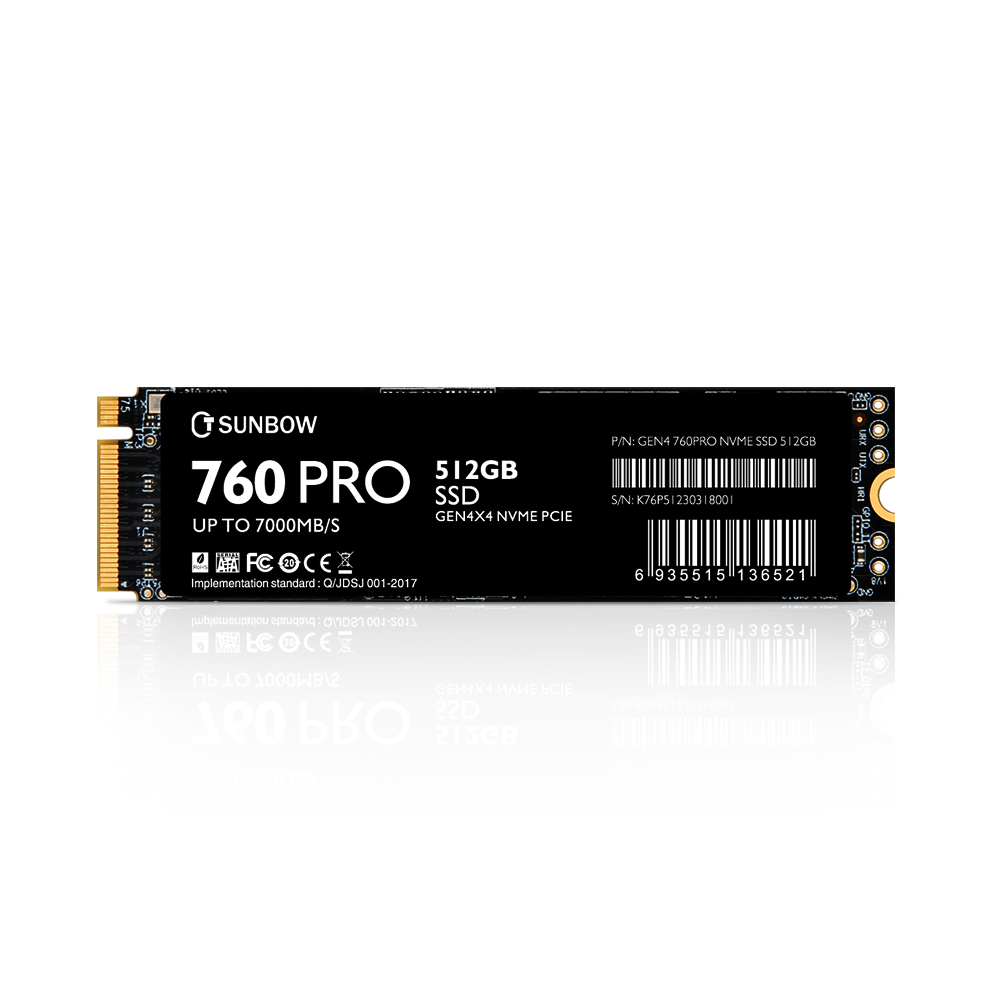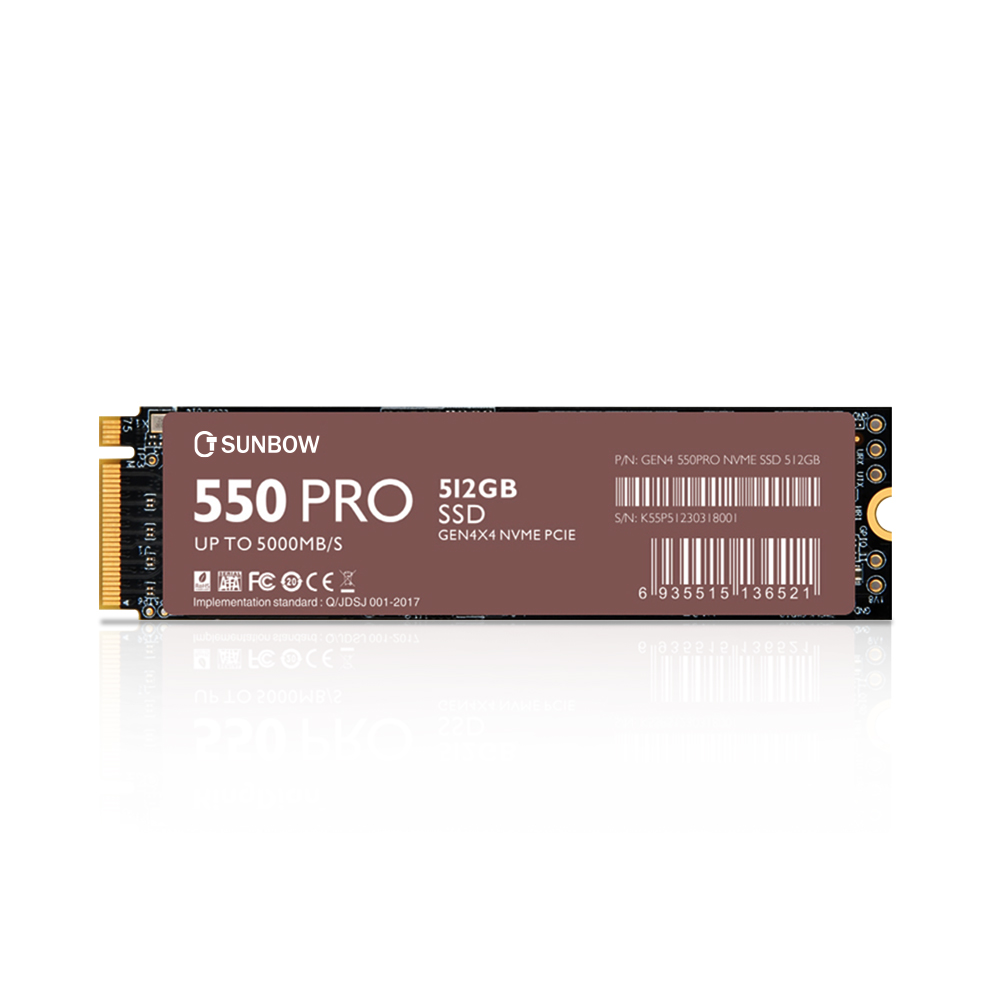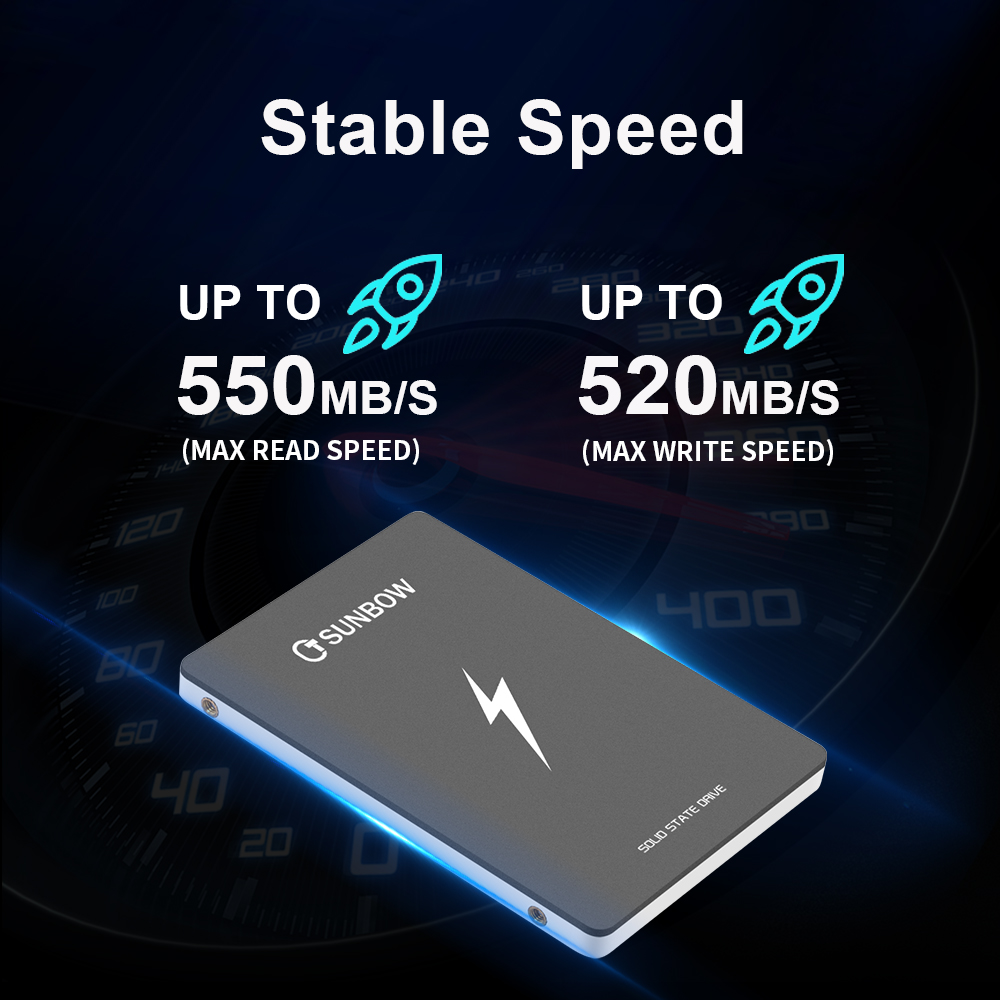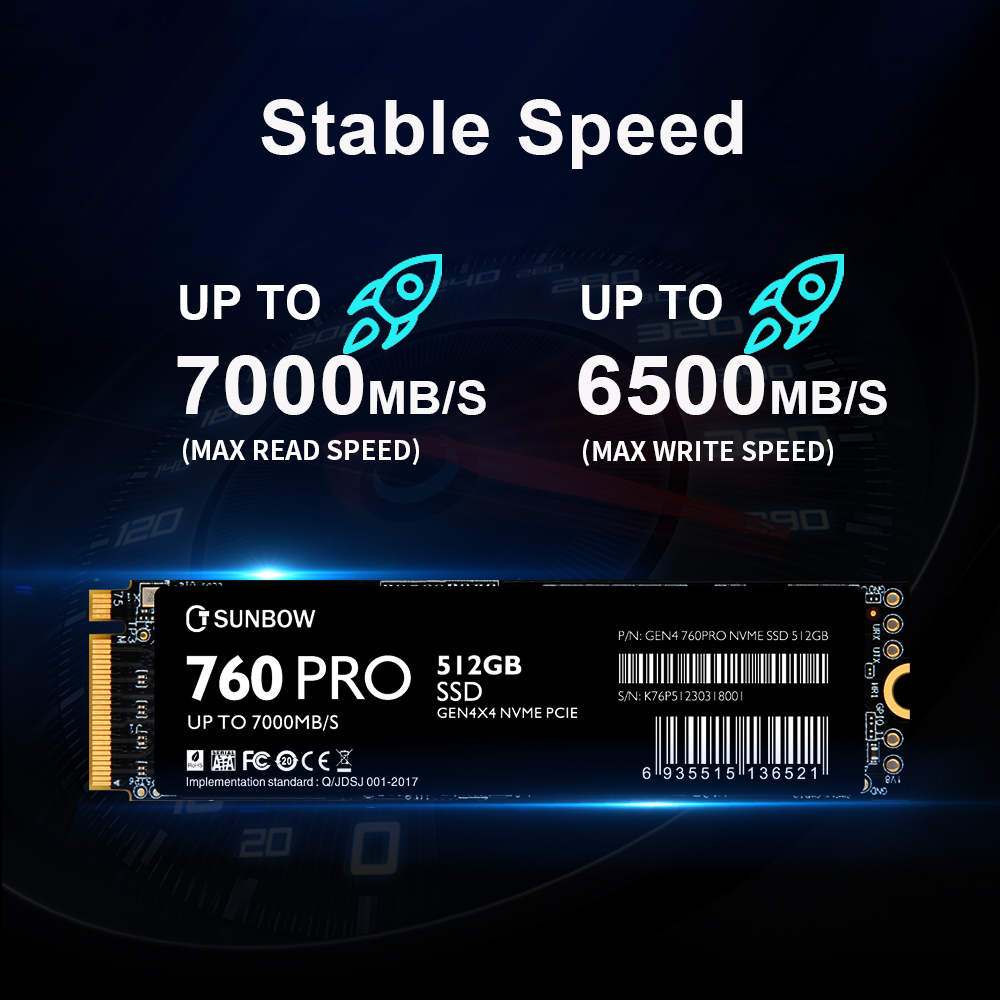SSD (solid-state drive)
SSD, which stands for solid state drive, it is also called solid-state disk/solid-state hard drive. It is a data storage device that stores data in flash memory. SSDs are gradually replacing HDDs and are becoming increasingly common in PCs.
Types of SSDs
Solid State Drives (SSDs) come in various types, each designed to meet different performance needs and use cases. Here are the main types:
SATA SSD
Interface:SATA III (Serial ATA)
NVMe SSD
Interface:PCIe (Peripheral Component Interconnect Express)
M.2 SSD
Interface:SATA or PCIe (NVMe)
Speeds of SSDs
The speed of an SSD (Solid State Drive) is determined by various factors, including the interface it uses, the type of NAND flash, and the SSD controller. Generally, SATA-based SSDs have a maximum read/write speed of 500MB/s to 600MB/s, such as the TCSUNBOW SATA3 SSD, which can reach speeds of up to 550MB/s.
NVMe-based models, on the other hand, can achieve speeds ranging from 3,000MB/s to 7,000MB/s or even higher in certain cases.
However, it's important to note that these figures represent theoretical maximum speeds, and actual performance will depend on the computer configuration, with speed tests showing slight variations.
Advantages of SSDs
SSDs have many advantages over HDDs and are becoming increasingly popular in various computing devices.
- Faster Transfer Speeds
- Quieter Operation,
- Lower Power Consumption,
- Durability and Reliability: Unlike HDDs, SSDs have no moving parts, making them more resistant to physical shock and damage.
SSD hard drives offer significant advantages in terms of speed, durability, energy efficiency, and overall user experience, making them the preferred choice for modern computing, whether for personal use, gaming, or business environments.











TCSUNBOW SATA3 SSD TC25
TCSUNBOW NVMe SSD GEN4X4 G43
TCSUNBOW DDR5 Memory RGB With Heatsink Series RH50
TCSUNBOW DDR4 Memory SODIMM Series